Social Media: A Survivor’s Perspective, given at the American Cancer Society Annual Meeting (#acsmtg09), November 19, 2009.
When I got sick, I had no idea how much my life was about to change.
I was 34, a mom of a toddler and a newborn baby, and my days were filled with caring for them, keeping the family going, and writing about our adventures on my blog. I was totally dedicated to being a good mom, and giving my two little boys the best childhood that I could.
Then my mother-in-law was diagnosed with cancer. We were told that she had infiltrating ductile carcinoma. Although I thought I was relatively well-informed, I had no idea what that was. So, after I put the toddler to bed and started nursing my infant, I googled it. The American Cancer Society’s web page told me what it was, and that there were other kinds of breast cancer as well. Infiltrating lobular carcinoma. Invasive ductile carcinoma. Invasive lobular carcinoma. Words I’d heard but didn’t ever have the need to understand before then. And then, at the bottom of the page, was something I’d never heard of. Inflammatory breast cancer. This cancer was uncommon, it said, and different from the others. “Usually there is no single lump or tumor. Instead, IBC makes the skin of the breast look red and feel warm.”
That’s funny, I thought. Sounds like mastitis. But that’s common in nursing moms. I think I’m getting a case right now.
“It also makes the skin look thick and pitted, something like an orange peel. The breast may get bigger, hard, tender, or itchy.”
What strange symptoms, I thought, and stopped to scratch something tickling my chest.
“In its early stages,” I read, “inflammatory breast cancer is often mistaken for infection. There is no defined lump…It usually has a higher chance of spreading and a worse outlook than invasive ductal or lobular cancer.”
Hmmm.
I tried to shift the baby to nurse on the other side, but, as usual, he would have none of it. He fussed and cried, and I gave up, removing him from the dimpled breast. The next morning, I called my OB to ask him about the baby refusing to nurse. I’d been to the pediatrician and the lactation consultant many times in the past 5 months. Why not, I thought, give this a try?
My OB didn’t know what to make of it. “I’ve never seen this before,” he said. “I don’t know what it is, but I don’t like the looks of it.” And just like that, I was sent to the Lombardi Cancer Center, and my journey with inflammatory breast cancer began.
After a whirlwind week of appointments, a mammogram, an ultrasound, and a set of seven core biopsies on my right breast, I was at home, alone, waiting for the results. My husband had driven out to help his mother after her lumpectomy, and I was on the computer, as I often was, thinking out loud on my blog. I was reeling from my mother-in-law’s diagnosis, and, as the rash on my breast grew redder every day and began to spread across my chest, I had to talk about it.
So I did. Tentatively at first, sharing the news of my mother-in-law’s diagnosis, asking for information and statistics on surviving breast cancer, because I trusted my friends online to know where to find the facts, and I was scared to do much research myself. Then I read that 1 in 8 women will get breast cancer in their lifetimes. My playgroup has 8 moms. I was really struck by that, and I began to write about what I was learning every day. As I went through the stages of testing, I wrote about the experience. I wrote about what it was like to lie on the cold table while the surgeon plunged a needle into my chest, seven times, to take the biopsies. I wrote about the waiting. The fear. The craziness that was watching this rash move across my chest in a matter of days.
And for the first time, I admitted that I was scared.
I thought at first that this would drive my readers away. I mean, there weren’t many of them, and I was known for happy, positive blogs in the past. But this wasn’t a happy, positive time. This was real, and it was, in many senses, the unknown.
You see, twenty-five years ago, my grandmother was diagnosed with cancer. I don’t know what kind. They didn’t talk about it, and in fact she never told her own children whether it was ovarian, uterine, or cervical. All we know is that it was “a female cancer,” and, at some point, she lost her hair from the treatment. It wasn’t talked about in those days. But if it had been talked about, and if I had any idea that I might be at higher risk, I might have been more informed going into this.
So I began to write. Every day, I wrote about what tests or treatment I had, how it made me feel, and what I was thinking about for the next step. I thought people would leave my blog in droves. But they didn’t. They stayed. My friends stayed with me, and began to offer comments of support.
When I got the diagnosis of “cancer,” it came with a mandate of “chemo,” starting the next week, the day after the fourth of July, and our family picnic that we always host for my moms’ group. I was devastated. It didn’t make sense.
So I wrote about it.
I wrote about the fear of putting my life as I’d known it on hold, and starting something new. I wrote about the rash that by then had covered my breast, and about how tired I was all the time. I became weak, and scared, and spent many days in bed, too tired to move, too exhausted as my body fought off the cancer.
And then, I went to chemo. More than anything at this point, I was terrified of the unknown. Aren’t chemo wards for sick people? What would it be like? What should I expect? And so I wrote about it.
And as I wrote about it, more people came to my side. Friends of friends at first, and then friends of friends of friends. My best friend made a logo, and asked people to post the logo on their site to show that they supported me in my fight, and it began to pop up everywhere, even on sites that I had never visited before. I wrote an article about IBC and its symptoms, and asked people to post it, to spread awareness, to let other people know that if they experience a change in one breast and not the other, that they should notice, and call their doctor.
400 blogs reprinted my post. My story was picked up by newspapers, TV, Health magazine, and CNN.
But that wasn’t what made the difference to me. What made the difference to me, in my survival, was the incredible outpouring of support that these bloggers, these unseen faces typing at keyboards in kitchens and in offices across the country, were sending me. They were sharing their lives with me, supporting me, telling me that I was strong, that I could do this, and, sometimes, that it was ok to be weak and to cry.
They became my link to the outside world.
Chemo was hard on me. Because of the toll that it took and the risk of infection, I rarely left the house during my 6 months of treatment and recovery from the double mastectomy that followed. The taxol caused such neuropathy that I lost the ability to move my legs at all, and I rarely left my bed. I had to miss playdates, moms-night-out, conferences, and all the little things that make up a life.
But I had something. I had a link to the outside world through my computer.
Through social media, I was able to write about my experiences – and get comments, validation, questions, and support, as soon as I hit “publish.” I was one of the first to use twitter for real-time health updates as I prepared and then recovered from my mastectomy. And let me tell you, hearing all the wonderful, supportive, loving comments that poured in during those terrible days of drains and blood and loss helped me face the next day, and gave me the confidence to go out in public again, even though I had no reconstruction and choose to not wear prostheses.
I attended the BlogHer conference in Second Life, soon after I was diagnosed, and in fact, I used it as a testbed for being bald. I made my avatar, the little person that represents you on screen, bald, but in an elegant swirly dress and heels. I began to interact with others as a bald woman, although I had not yet lost my hair in real life. It was awkward, at first, but soon I found that it opened up space for real conversations.
And I found that nearly everyone has been touched by cancer. And nearly everyone still hurts.
As my chemo treatments continued, I did lose my hair. But it was not traumatic. I had already dealt with the trauma on my time, in my space, in Second Life. And I went through my treatment period without a wig, proud of my scars, because they mean that I was given a chance to fight.
Social media kept me connected to a world that I was otherwise cut off from the moment I began treatment for cancer. It helped me build friendships, have people to talk to, attend conferences, and stay in touch with the people in the world even when I was confined to bed.
The funny thing was, I wasn’t just talking to survivors. Everybody has a cancer experience, and nearly everyone wants to talk about it, and to help those currently going through it. Daughters of survivors, and newly diagnosed patients began to find my blog as I finished treatment, asking for support, asking for advice, asking not to be forgotten while they spent their own time alone in the chemo ward. I knew this was a project way too big for me alone. So I started a blog called Mothers With Cancer, and invited other moms I knew to join me. Today, the blog has 20 writers, over 150,000 hits, and a substantial archive of personal experiences indexed by type of cancer, treatment, emotions, and children’s age.
And what we’ve discovered is this. No matter what we have to go through to beat this thing, it’s so much easier to go through it together. Whether as part of our Mothers With Cancer site or simply by speaking out on our own blogs, the social media support has been critical to our recovery, helping each of us know that no matter what, we are not alone.


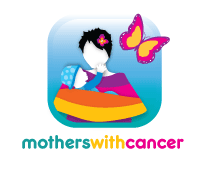










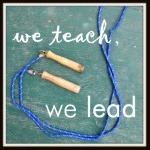

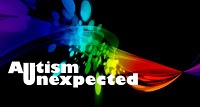

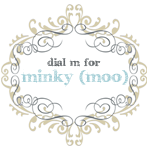


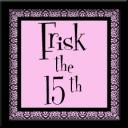








[…] patients, caregivers, and everyone during their cancer journey. In 2009, she keynoted at the American Cancer Society’s Annual Meeting and she enlightened us all about the power an Internet connection could provide to a cancer […]
Susan,
I found your site on Facebook from another sorority sister (Courtney Huskamp Huggins). I had no idea. You are an inspiration and I will keep you and your family in my thoughts and prayers.
Shannon Cox Goodwin
[…] into my memory. The emotional connection of reading your husband post the Goodbye and the brave blogging about fighting breast cancer gave me the push I […]
[…] post: genuine, enduring, appreciative. And all through it, she taught. She used her platform to educate, and to encourage. She altered – and opened – my perspective a hundred […]